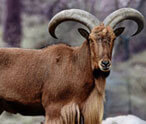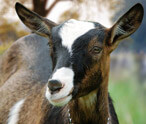
Fireflies can rightly be considered the "bulbs of nature", as they light the serene rustic environment in the pitch dark of the summer nights. Belonging to the insect family Lampyridae and grouped under the beetle order Cleoptera, they are commonly referred to as the "lightening bugs". Interestingly, they make use of the bioluminescence either to attract the opposite sex for mating or to prey. The luminescence produced by the fireflies is called 'cold light' and it does not contain ultraviolet or infrared frequencies. Concerning the color pattern of the chemically produced light from the lower abdomen of these winged beetles, it may be pale red, green or yellow, with the wavelength ranging from 510 to 670 nm. In the temperate and tropical environments, there exist as many as 2,000 species of the nature's lanterns. The presence of larvae, usually, depends on the abundant availability of the food in marshes or in wet, woody areas. Quite amazingly, these insects do produce light even in their larval stage, and are known as 'glowworms' especially in the European and Asian countries. However, in the Northern and Southern American continents, besides referring to the firefly larvae, the word "glowworm" also refers to the other related species of Phengodidae.
Firefly Pictures
If you haven't still viewed the bioluminescence-producing winged beetles in the natural rustic environment in the night, just satisfy your curiosity by gazing at them in the firefly pictures, available in hundreds of thousands numbers over the vast universe of World Wide Web. Regarding their physical characteristics, they are soft bodied and tend to be brown in color, and in majority of the cases the front wings are larger than those found in other beetles. Usually, the females have the same appearance as that of their male counterparts. In certain cases, the females are not like the adult males, but show a greater degree of similarities with the larvae. Owing to this physical intimacy of the females with the larvae, they are termed as 'arviform females'. The only physical difference that distinguishes them from their larvae is that of the presence of compound eyes. While looking at the larviform females, you can also realize that they are wingless and are larger than the winged males of the same species.
Amazing Firefly Facts For Kids
- The lightening bugs talk to one another with the help of their lights. For example, they attract mates by lighting their bulbs. They also make use of this signal to defend territory and warn predators away.
- In majority of the cases, both the sexes of the fireflies are capable of glowing, but in some of their species, only one sex lights up.
- Usually, males fly while the females wait in the grasses, bushes or trees to find and catch the attention of an attractive male.
- If a waiting female finds a suitable mate, she will signal that male with the help of flash of her own.
- The "Cold Light" produced by these glowing insects is considered to be the most efficient light in the world, as 100% of the energy is expressed in the form of light. In contrast, an incandescent bulb uses only 10% of the energy to produce light, while the remaining is used to produce heat. Likewise, a fluorescent bulb emits 90% of its energy as light.
- As no heat is produced with the emission of light by these winged beetles, scientists term it 'cold light'.
- In the tail of these insects, there are found two chemical substances, i.e. luciferin and luciferase, where the former is heat resistant and glows under the right conditions, and the latter is an enzyme that is used to trigger light emissions.
- The chemical substance ATP (Adenosine Tri-Phosphate), in the body of the 'natural lightening bulbs' is converted into energy, thus initiating the glow.
- You will be startled to know that it is not just the adult fireflies that glow; in some of their species, the larvae and even eggs have also been found to emit light.
- The eggs generally emit light at the time when you gently tap or subject them to mild vibration.
- In is, indeed, one of the very painful firefly facts that some species feed on other fireflies, as they are carnivorous in their dietary behavior.
- In their larval phase, the glowing bugs victimize snails and worms to quench their hunger.
- Interestingly, the members of photuris mimic the female flashes of the photinus (a closely related species) in order to attract and devour the males of the latter.
- It is also amazing to note that the adults have never been found to feed on other species of bugs.
- The scientist are not quite sure concerning what the adults eat, however it is thought that they might be feeding on the plant pollens, or eat nothing.
- The fireflies have got a short lifespan, as they only live long enough to mate and lay eggs. That is why they may not need to eat after reaching the adult stage.
- Under ordinary circumstances, from mating season to mating season, the larvae live for as long as a year, and then attain adulthood for giving birth to the next generation.
- These are not just the members of photuris that show imposturous behavior; there are certain species of these insects as well which practice the same notorious habit.
- It has also been observed that, sometimes, male photuris mimics the male photinus to attract the females of his own species. In this way the females, looking for food, serve as mating partner for the males.
- The scientists have made a really mind blowing discovery that photinus males imitate photuris females in order to create the bad impression of the photinus male flashes. In this way, other photinus males are scared off and, consequently, the competition among them is reduced.
- Concerning their distribution, the fireflies are found on almost all the continents in the world.
- Owing to their love for warm and humid habitats, fireflies thrive in the tropical regions as well as temperate zones of all the continents except Antarctica. To enjoy such environments, they come out during the summertime.
- The moist environments like, forests, fields, marches near the lakes, rivers, ponds, vernal pools and streams are considered to be their source of survival and the propagation of generation.
- It has also been found that some species live almost entirely on trees, while the larvae of some others are aquatic and also have gills.
Medical and Scientific Importance of Fireflies
Scientists have made a marvelous discovery that the fireflies have got great medical and scientific important as they can help detect diseases and abnormalities in the human body. Two important chemicals are found in the body of these lightening bugs, i.e. luciferin and luciferase, which produce bioluminescence in the presence of ATP. Adenosine Tri-Phosphate (ATP) is found in almost all the animals and serves as instant energy source. In the human body, all the cells contain sufficient supply of ATP, but in case of any abnormality, the affected cells have insufficient ATP. So, if these chemicals (luciferin & luciferase) are extracted from the fireflies and injected in the human body, the diseased or abnormal cells will easily be detected.
Latest Mammals

Types Of Goats
Goat is a mammal that belongs... read more

Goat Facts
A domesticated form the wild goat of...read more

Giraffes Facts
Giraffes are creatures with extremely...read more



























Largest Birds of Prey in the World by Size and Weight
Also called raptors, the birds...
List of Birds That Fly in V Formation
Did you ever feast your eyes on the amazing phenomenon...
Birds of Prey List
A bird of prey is also known as a raptor or a hunter. It belongs to the group of...
Millipedes Vs Centipedes
Centipedes and millipedes are both arthropods from the group...
Difference Between Warm Blooded and Cold Blooded Animals
Every living organism...
Top 10 Extremely Dangerous Insects
The insects have been grouped in class 'insecta' of...
Sheep Vs Goat
The goat and the sheep are related to each other through the same family. They...
Animals with Blue-colored Blood
Humans and other vertebrates have red-colored blood running...
Birds, Mammals And Reptiles
Before coming to the question of common ancestry of birds...